Part of a series of articles titled Plant Community Monitoring in Northern Great Plains Network Parks.
Article
Plant Community Monitoring at Scotts Bluff National Monument
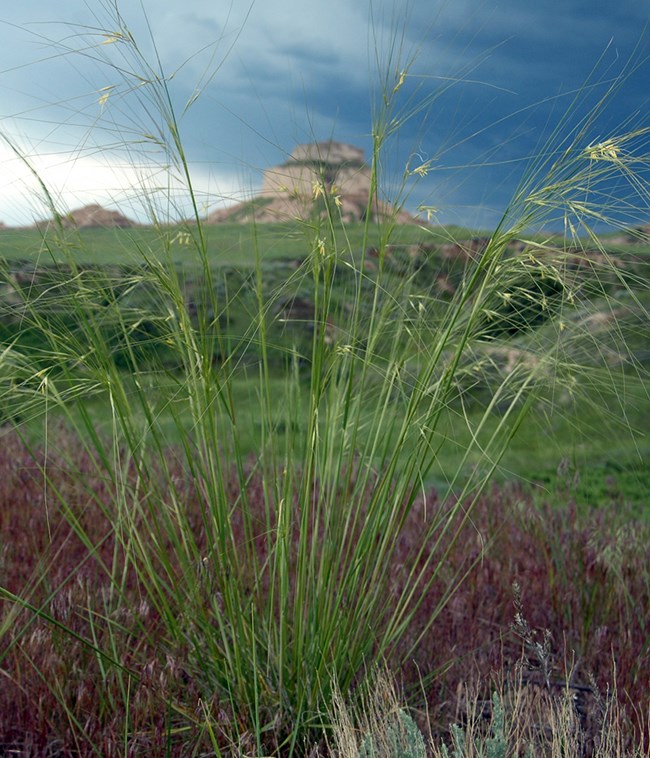
NPS
Overview
Scotts Bluff National Monument is a 3,003 acre park dominated by mixed-grass prairie with smaller areas of juniper woodlands, badlands, and riparian (riverside) forests along the North Platte River. During the last century, much of the Northern Great Plains prairie was plowed for cropland, planted with non-natives to maximize livestock production, or otherwise developed. About 75% of the native mixed-grass prairie has been lost; the park plays an important role in protecting remaining intact prairie.
Park plants are sensitive to many stressors, including invasive species, habitat fragmentation, climate change, and altered fire and grazing patterns. Park management actions, such as prescribed fire, and exotic species control, may also affect plant communities. The Northern Great Plains Inventory and Monitoring Network conducts long-term monitoring of plant communities at Scotts Bluff National Monument because it helps us better understand the current health of ecosystems and it can provide an early warning of undesirable changes.
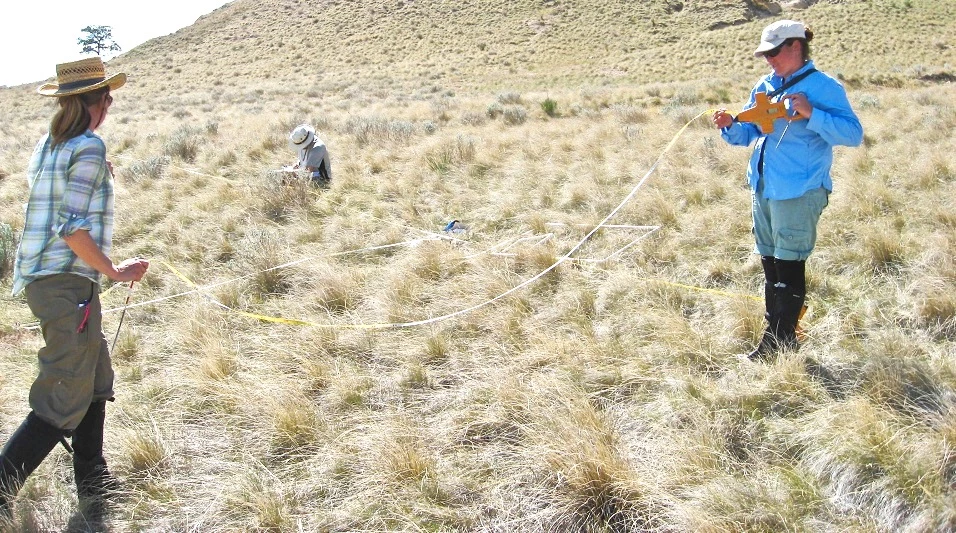
NPS
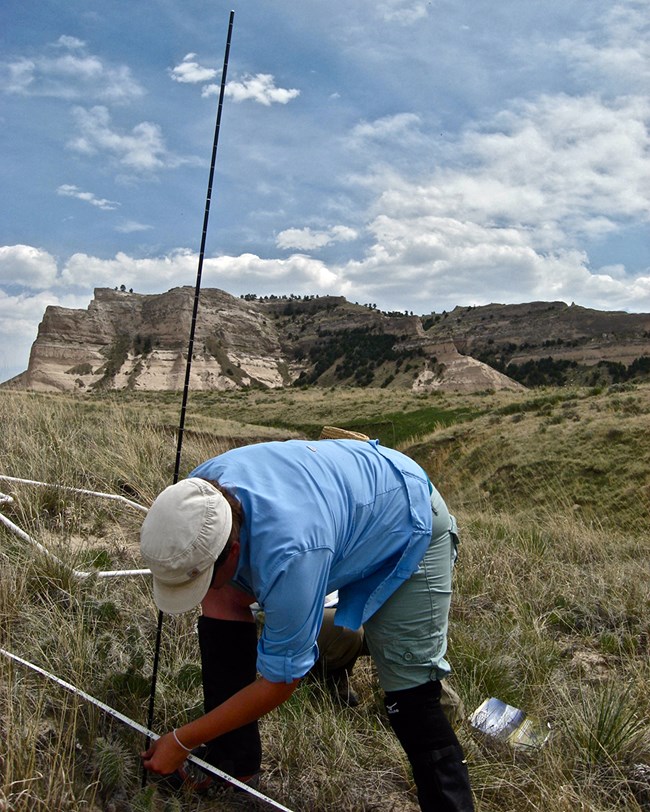
NPS
What We Monitor
We established plant monitoring plots in 2011 throughout the park in areas above the floodplains of the river (uplands). A subset of these plots is monitored each year on a rotating basis. At each plot, we record the native and exotic plant species found and the vegetation cover of each species, a measure of how much ground is covered by the plant. When woody species are present, tree regeneration and tall shrub density data are collected. In 2011, we combined our efforts with the NPS Northern Great Plains Fire Ecology Program to establish a single, coordinated set of vegetation monitoring methods .
In 2014 and 2019, we surveyed plots in the riparian forests along the North Platte River to better understand the status and trends in riverside vegetation specifically. We collect information on tree stem density, tree diameter, tree status (live or dead) and condition (leaf-discoloration, insect-damaged, etc.), cover of exotic species, and disturbance. These riparian plots will be surveyed every five years.
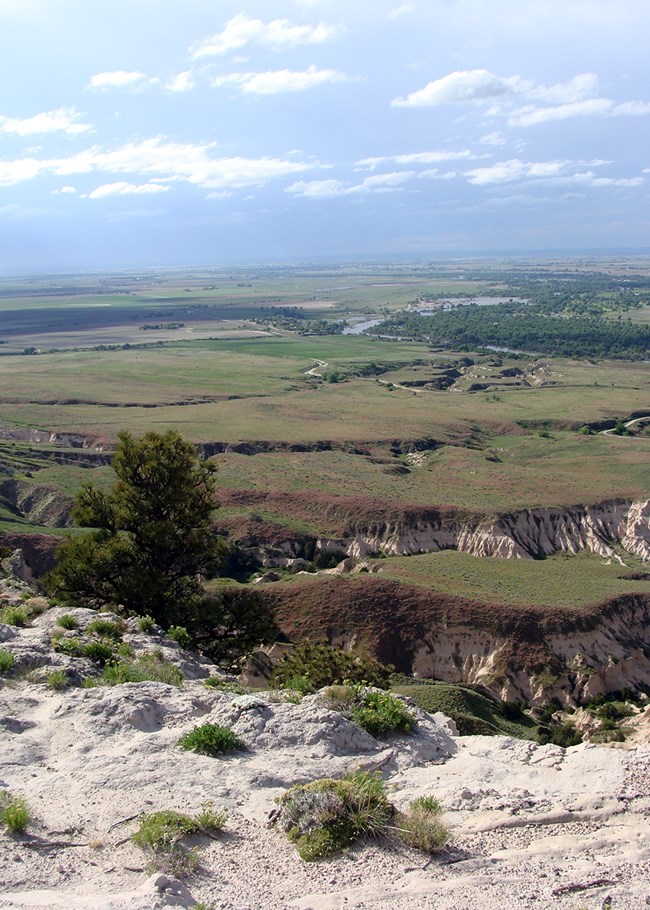
NPS
Plant Communities in the Park
The Scotts Bluff National Monument species list includes 418 plants. In 2018, 103 unique plant species were found on monitoring plots; over 250 species have been found during monitoring since 1998. Native plant diversity is at a moderate level compared to other grasslands in the region, but diversity is variable between plots. Graminoids (grasses, sedges, and rushes) accounted for most of the vegetation cover, but forbs (flowering plants that are not woody and not a grass or grass-like), shrubs, and subshrubs (low-growing shrubs) are also present.
Since 1998, we have detected 40 exotic species on the park, and exotic grasses were particularly abundant. Two Eurasian annual grasses, cheatgrass (Bromus tectorum) and Japanese brome (Bromus japonicas), were the most common exotics. Annual bromes account for about 90% of the exotic plant cover on monitoring plots. Thirty-five rare plant species have been detected since monitoring began, including three species considered imperiled in Nebraska: slender wheatgrass (Elymus trachycaulus), western tansymustard (Descurainia pinnata) and hairy false goldenaster (Heterotheca villosa)
Riparian forests along the North Platte River are a fairly diverse assemblage of cottonwood (Populus deltoides), willow (Salix sp.), green ash (Fraxinus pennsylvanica), and box elder (Acer negundo); nine species of trees and large shrubs were found. Exotic grasses and forbs are common in the understory of the riparian forest on the park.
More Details
- The most common native graminoids were western wheatgrass (Pascopyrum smithii), needle-and-thread (Hesperostipa comata), and threadleaf sedge (Carex filifolia).
- There are no significant trends (increases or decreases) in the number of native species. However, there was a great deal of variation between plots making long-term trends difficult to detect.
- There were fewer native plant species in recently burned plots compared to plots with more time since burning. This suggests that prescribed fire can benefit the mixed-grass prairie, but it may take time.
- Plots with more annual brome cover had fewer native species. Prescribed burning alone will not be enough to control exotic bromes, so other control methods and seeding of native species will probably be necessary.
- There is a high density of exotic plants in the riparian forest, especially musk thistle (Carduus nutans) and cheatgrass (Bromus tectorum). Control efforts are underway, but the river is an avenue for infestation and the riparian area has large seedbanks and moist conditions that make exotic species control challenging.
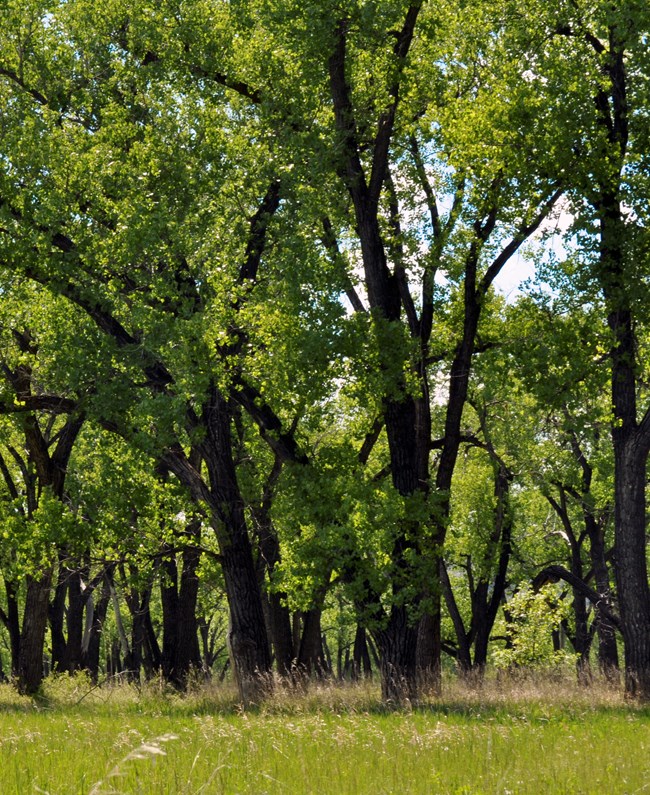
NPS/Laura Thomas
Did You Know?
Plains cottonwood is a pioneer species that tends to establish and become dominant on exposed streambanks and other floodplain sites. Cottonwoods forests require periodic flooding because they are not shade tolerant. These floods keep riparian (riverside) forests relatively open, allowing young cottonwoods to thrive. Without this thinning of trees, cottonwood forests can eventually become dominated by more shade-tolerant species like ash trees.
While there are fewer young cottonwood trees in the riparian area at Scotts Bluff National Monument compared to the late 1800s, some young cottonwoods have successfully established. However, the large abundance of green ash and box elder seedlings suggests that the riparian forests may be transitioning to ash-dominated forests.
For More Information
Visit the Northern Great Plains Network website to read more about plant monitoring at Scotts Bluff National Monument.
Protocol Contact, Northern Great Plains Inventory and Monitoring Network: Isabel Ashton
Summary by Northern Great Plains Network, updated in 2019
Last updated: November 19, 2019
